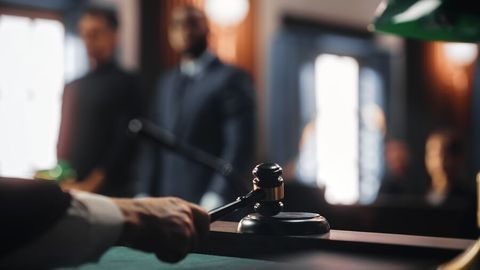Absent Contrary Evidence, Claim Terms Appearing In Different Claims Presumptively Carry The Same Meaning
Client Alert | 1 min read | 05.01.07
In PODS, Inc. v. Porta Stor, Inc. (No. 06-1504, April 27, 2007) a Federal Circuit panel reverses a district court’s judgment of infringement. The asserted patent includes both apparatus claims and method claims directed to “lifting a storage container from the ground onto a transport vehicle or vice versa.” With respect to the asserted apparatus claims, the parties agreed that the recited “carrier frame” required a four-sided frame. There was, however, no such agreement between the parties with respect to the “carrier frame” recited in the asserted method claims. Unlike the method claims, the asserted apparatus claims included a fairly detailed structural description of the recited carrier frame. The district court ruled that the omission in the method claims of the same structural description found in the apparatus claims “presumably carries consequences” that “the carrier frame described in [the method claims] is less precise and limited.”
Citing Fin Control Sys. Pty., Ltd. v. OAM, Inc., 265 F.3d 1311 (Fed. Cir. 2001), the Federal Circuit finds that the district court erred by failing to apply the “presumption that the same terms appearing in different portions of the claims should be given the same meaning unless it is clear from the specification and prosecution history that the terms have different meanings at different portions of the claims.” Id. at 1318. No evidence is found, says the panel, in the specification or prosecution history that the term “carrier frame” in the method claims has any meaning other than the uncontested meaning ascribed to it in the apparatus claims.
Insights
Client Alert | 6 min read | 11.26.25
From ‘Second’ to ‘First:’ Federal Circuit Tackles Obvious Claim Errors
Patent claims must be clear and definite, as they set the boundaries of the patentee’s rights. Occasionally, however, claim language contains errors, such as typographical mistakes or incorrect numbering. Courts possess very limited authority to correct such errors. The United States Court of Appeals for the Federal Circuit has emphasized that judicial correction is appropriate only in rare circumstances, where (1) the error is evident from the face of the patent, and (2) the proposed correction is the sole reasonable interpretation in view of the claim language, specification, and prosecution history. See Group One, Ltd. v. Hallmark Cards, Inc., 407 F.3d 1297, 1303 (Fed. Cir. 2005) and Novo Indus., L.P. v. Micro Molds Corp., 350 F.3d 1348, 1357 (Fed. Cir. 2003).
Client Alert | 5 min read | 11.26.25
Client Alert | 6 min read | 11.25.25
Brussels Court Clarifies the EU’s SPC Manufacturing Waiver Regulation Rules
Client Alert | 3 min read | 11.24.25


